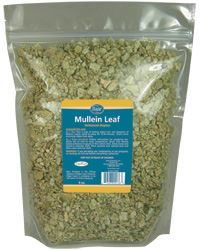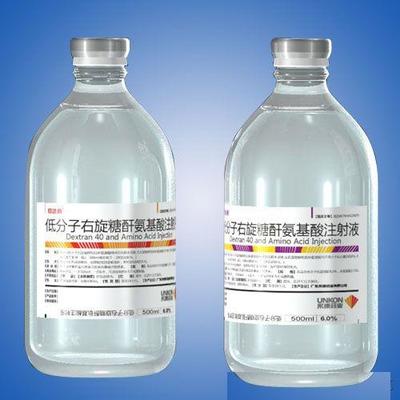Chlorogenic acid health benefit
Chlorogenic acid is a common dietarypolyphenol found in many plants including certain fruits, green teaand greencoffee bean. Chlorogenic acids are major secondary metabolitesfound in coffee seeds. Chlorogenic acid has a metabolite calledm-coumaric acid.
Chlorogenic acid in green coffee
Chlorogenic acids from green coffee extract are highly bioavailablein humans.
Chlorogenic acids are cinnamic acidderivatives with biological effects mostly related to theirantioxidant and antiinflammatory activities. Caffeoylquinic acids(CQA) and dicaffeo ylquinic acids (diCQA) are the main ones found innature. Because green coffee is a major source of chlorogenicacids, it has been used for production of nutraceuticals. Our studyshows that the major chlorogenic acids compounds present in greencoffee are highly absorbed and metabolized in humans.
Green tea extract offers a convenient way to get thebenefits of green tea in a highly concentrated green tea pillform. This green tea extract is standardized forbioflavonoid-like antioxidants known as polyphenols, particularlyEpigallocatechin Gallate (EGCG).EGCG has beenfound in scientific studies to be a potent antioxidant.
Chlorogenic acid for weight loss
The effect of chlorogenic acid enriched coffee on glucoseabsorption in healthy volunteers and its effect on body mass whenused long-term in overweight and obese people.
(J Int Med Res. 2007. Thom E. ETC Research and Development, Oslo,Norway.)
The results from a clinical study performed in 12 healthyvolunteers with different coffee products containing glucose showthat instant coffee enriched with chlorogenic acid induced areduction in the absorption of glucose of 6.9% compared withcontrol. No such effects were seen with normal or decaffeinatedinstant coffee. In a second, comparative, randomized, double-blind,12-week study we investigated the effect on the body mass of 30overweight people, compared with normal instant coffee. The averagelosses in mass in the chlorogenic acid enriched and normal instantcoffee groups were 5.4 and 1.7 kg, respectively. We conclude thatchlorogenic acid enriched instant coffee appears to have asignificant effect on the absorption and utilization of glucosefrom the diet. This effect, if the coffee is used for an extendedtime, may result in reduced body mass and body fat when comparedwith the use of normal instant coffee.
Chlorogenic acid protects againstradiation
Radioprotective effects of chlorogenic acid against mortalityinduced by g-irradiation in mice.
(Methods Find Exp Clin Pharmacol. 2008. Hosseinimehr SJ, ZakaryaeeV, Ahmadi A, Akhlaghpoor S. Department of Medicinal Chemistry,Faculty of Pharmacy, Mazandaran University of Medical Sciences,Sari, Iran. )
The radioprotective effects of the naturally occurring compoundchlorogenic acid have been investigated against mortality inducedby gamma-irradiation in mice. Chlorogenic acid was administrated atsingle doses of 100, 200 and 400 mg/kg 1 or 24 h prior to lethaldose of gamma-irradiation (8.5 Gy). Chlorogenic acid exhibitedconcentration-dependent activity on 1,1-diphenyl-2-picrylhydrazylfree radical to show strong antioxidant activity. It appeared thatchlorogenic acid with antioxidant activity reduced mortalityinduced by gamma-irradiation.
Chlorogenic acid raw herb and materialsuppliers
Chlorogenic acid is sold at 20 percent, 30 percent and 98 percentconcentration.
Chemistry
Chlorogenic acid is the ester formed between certain trans cinnamicacid and (L)-quinic acid.
Coffee consumption
Metabolite profiling of hydroxycinnamate derivatives in plasma andurine after the ingestion of coffee by humans: identification ofbiomarkers of coffee consumption.
(Drug Metab Dispos. 2009. Plant Products and Human Nutrition Group,Division of Environmental and Evolutionary Biology, Faculty ofBiomedical and Life Sciences, University of Glasgow, Glasgow,UK.)
Human subjects drank coffee containing 412 mumol of chlorogenicacids, and plasma and urine were collected 0 to 24 h afteringestion and were analyzed by high-performance liquidchromatography-mass spectrometry. Within 1 h, some of thecomponents in the coffee reached nanomole peak plasmaconcentrations (C(max)), whereas chlorogenic acid metabolites,including caffeic acid-3-O-sulfate and ferulic acid-4-O-sulfate andsulfates of 3- and 4-caffeoylquinic acid lactones, had higherC(max) values. In contrast, dihydroferulic acid, its 4-O-sulfate,and dihydrocaffeic acid-3-O-sulfate exhibited much higher C(max)values (145-385 nM) with T(max) values in excess of 4 h, indicatingabsorption in the large intestine and the probable involvement ofcatabolism by colonic bacteria. These three compounds, along withferulic acid-4-O-sulfate and dihydroferulic acid-4-O-glucuronide,were also major components to be excreted in urine (8.4-37.1 mumol)after coffee intake. Feruloylglycine, which is not detected inplasma, was also a major urinary component. Other compounds, notaccumulating in plasma but excreted in smaller quantities, includedthe 3-O-sulfate and 3-O-glucuronide of isoferulic acid,dihydro(iso)ferulic acid-3-O-glucuronide, and dihydrocaffeicacid-3-O-glucuronide. Overall, the 119.9 mumol excretion of thechlorogenic acid metabolites corresponded to 29% of intake,indicating that as well as being subject to extensive metabolism,chlorogenic acids in coffee are well absorbed. Pathways for theformation of the various metabolites within the body are proposed.Urinary dihydrocaffeic acid-3-O-sulfate and feruloylglycine arepotentially very sensitive biomarkers for the consumption ofrelatively small amounts of coffee.
 爱华网
爱华网


